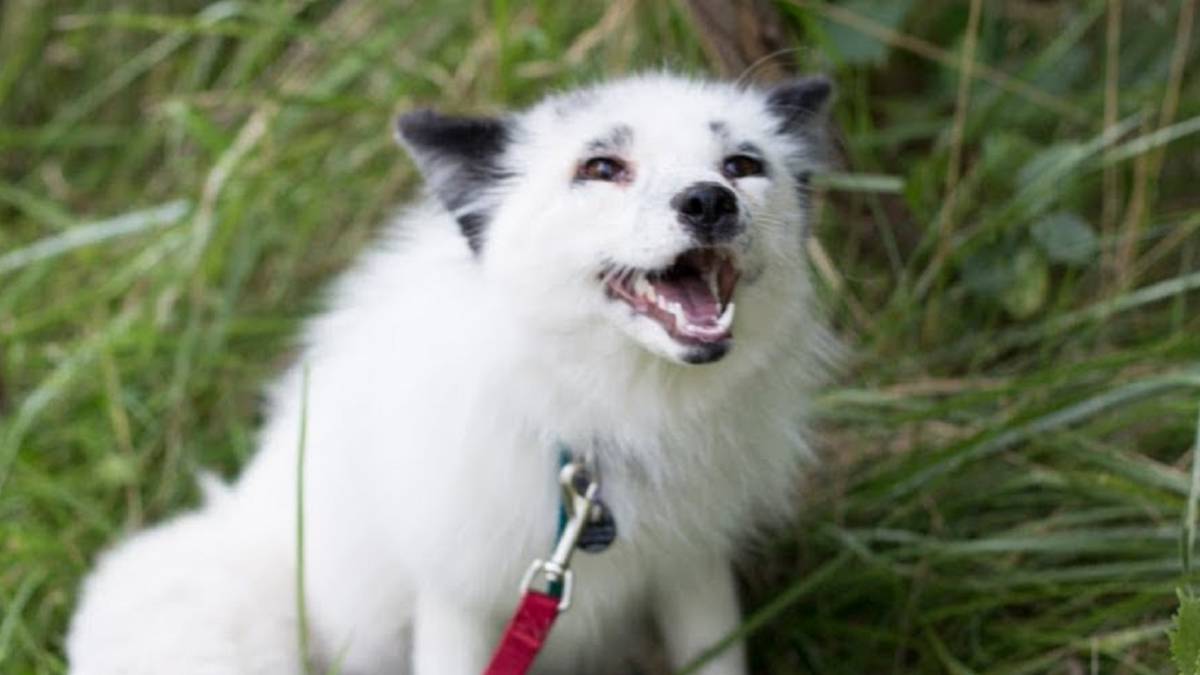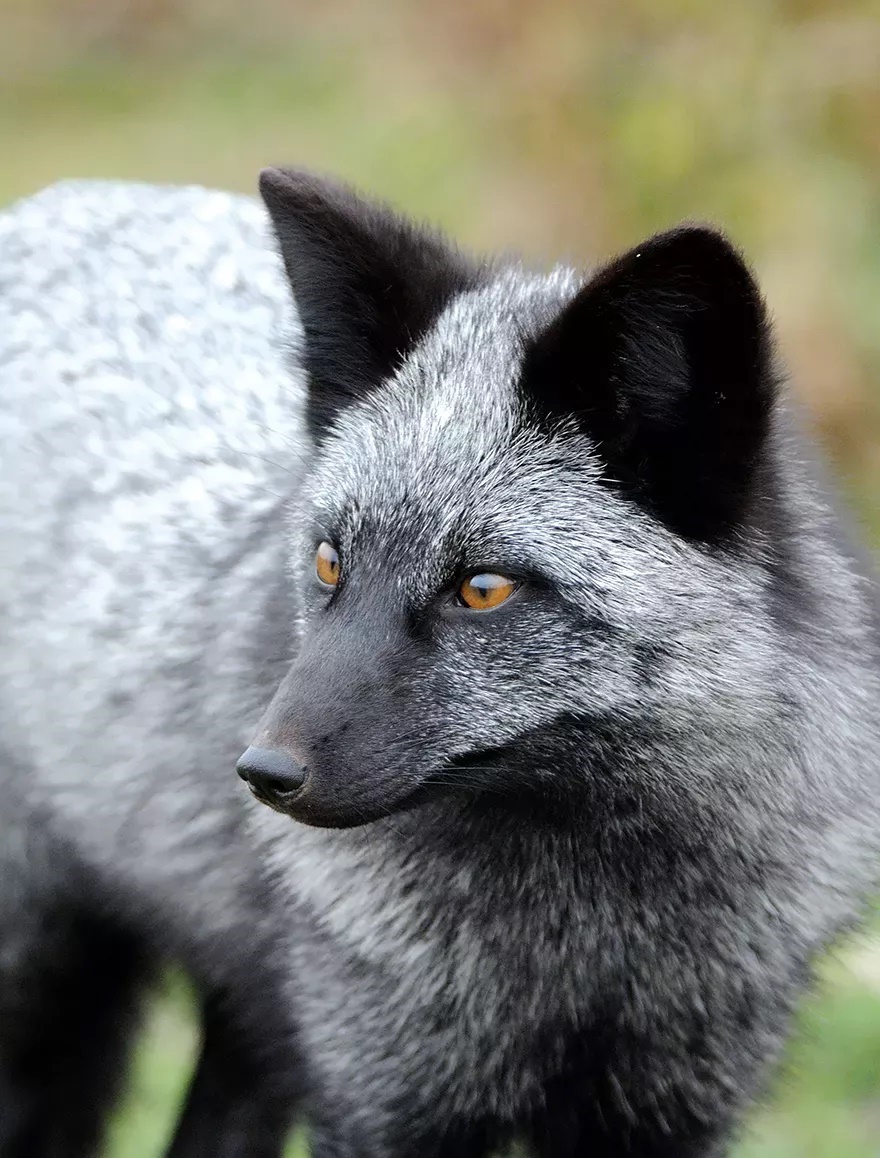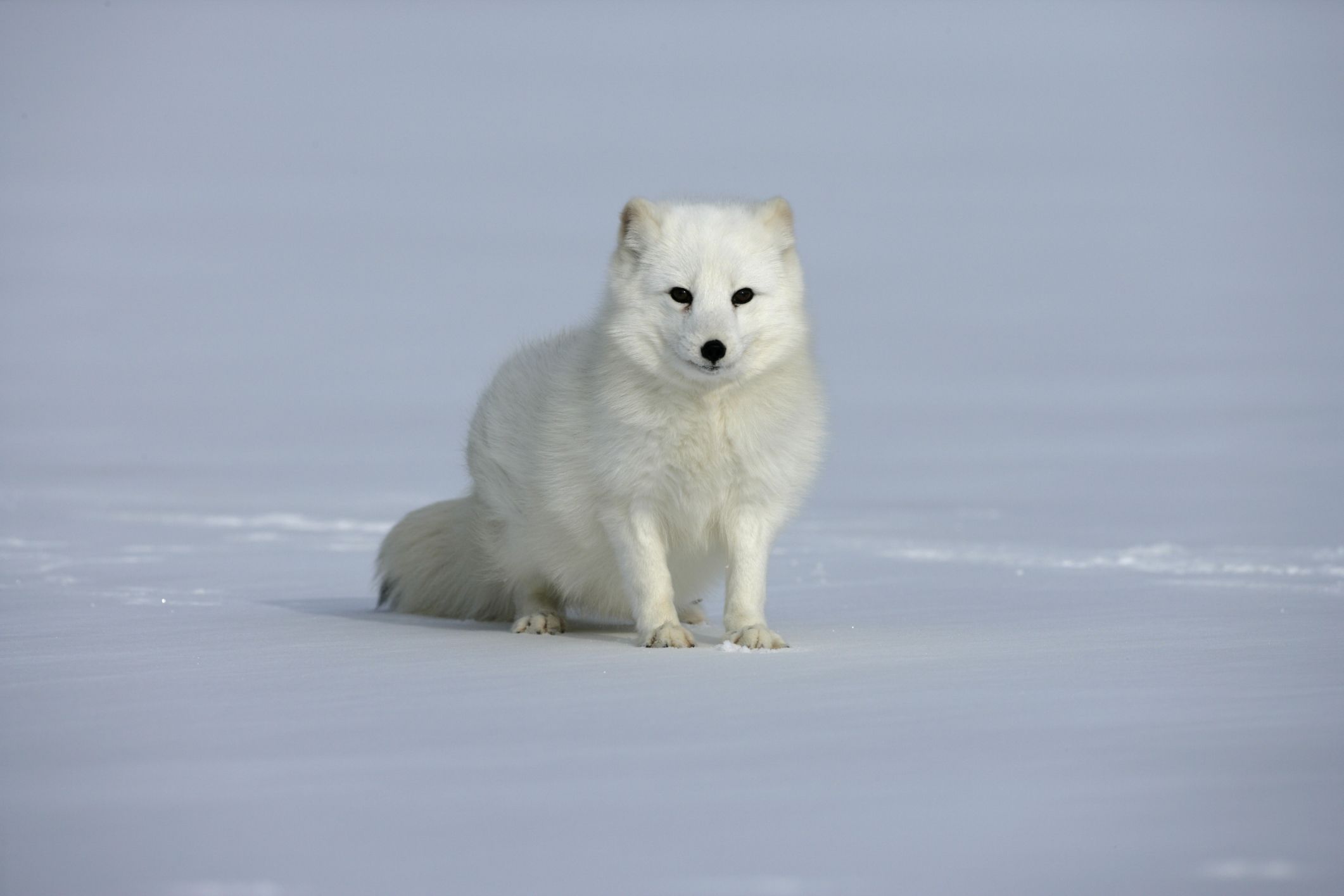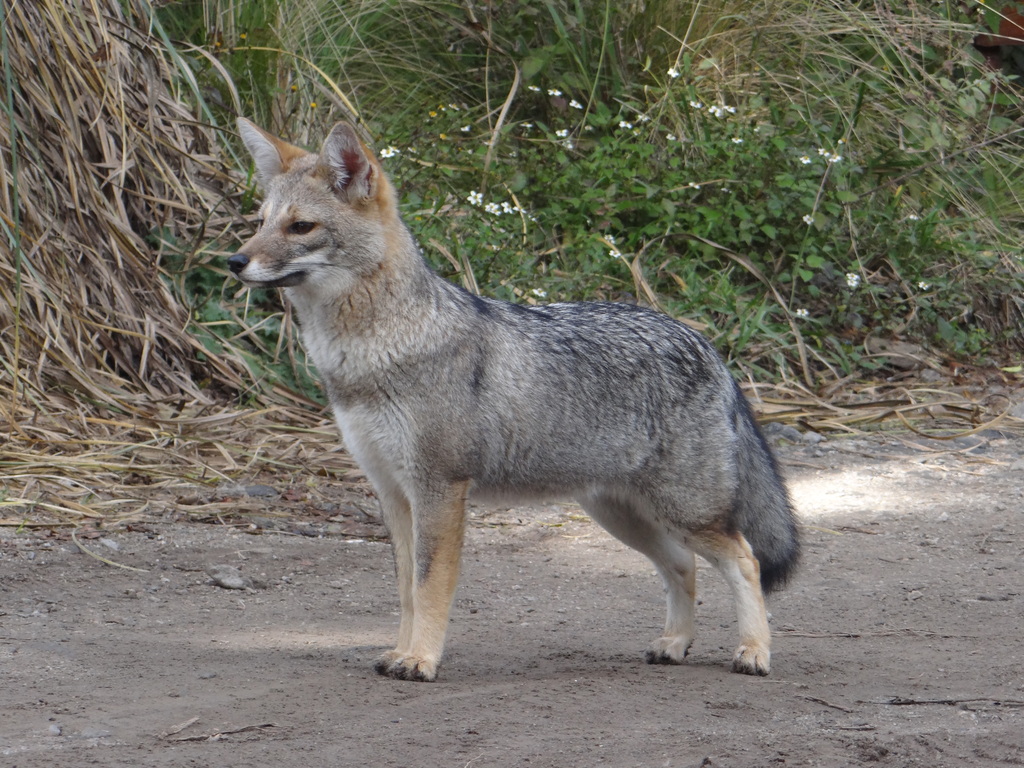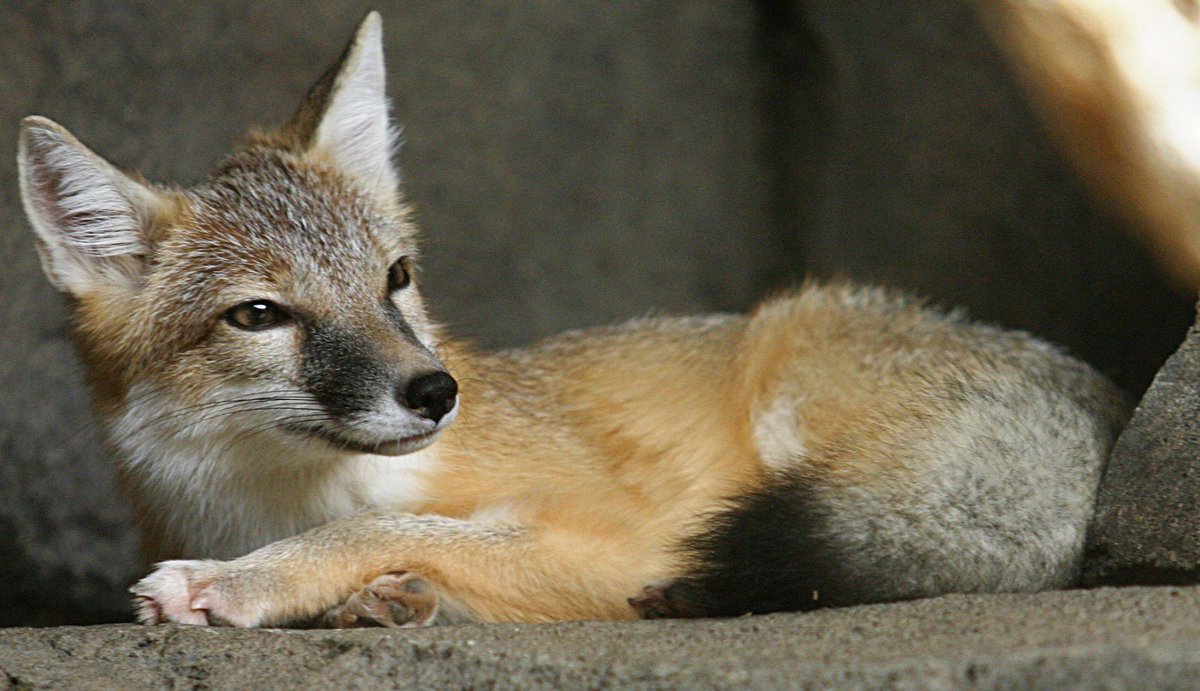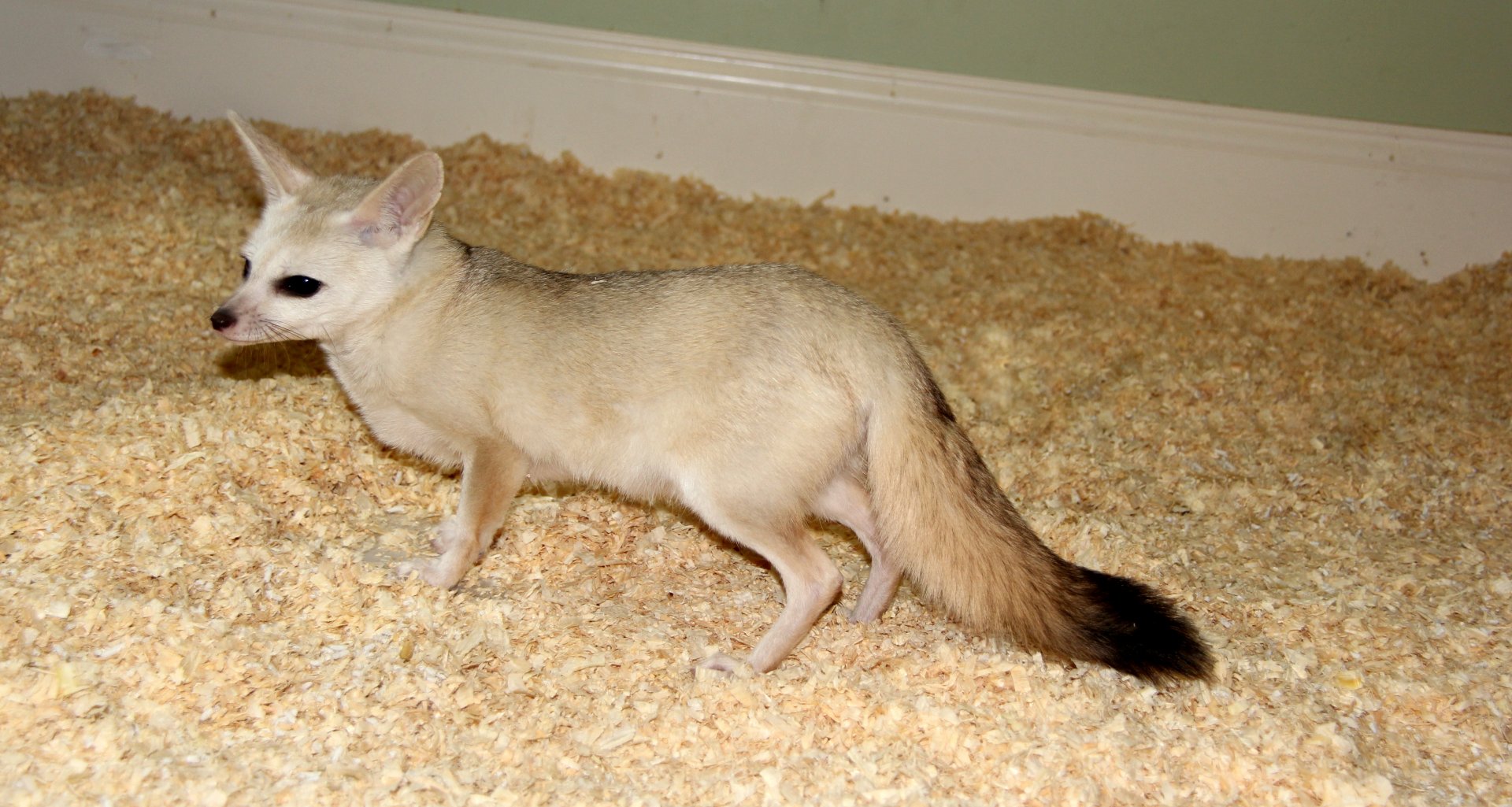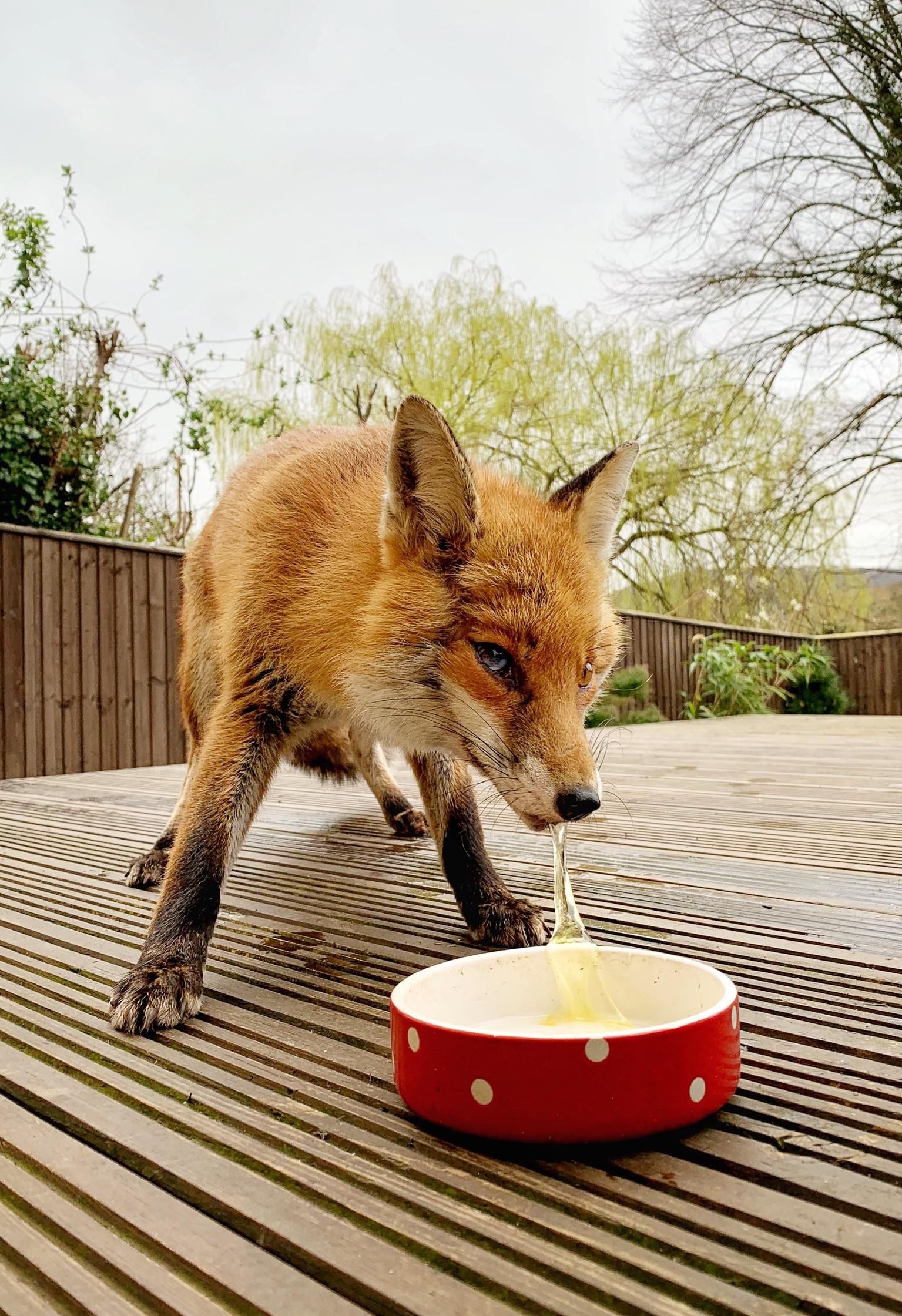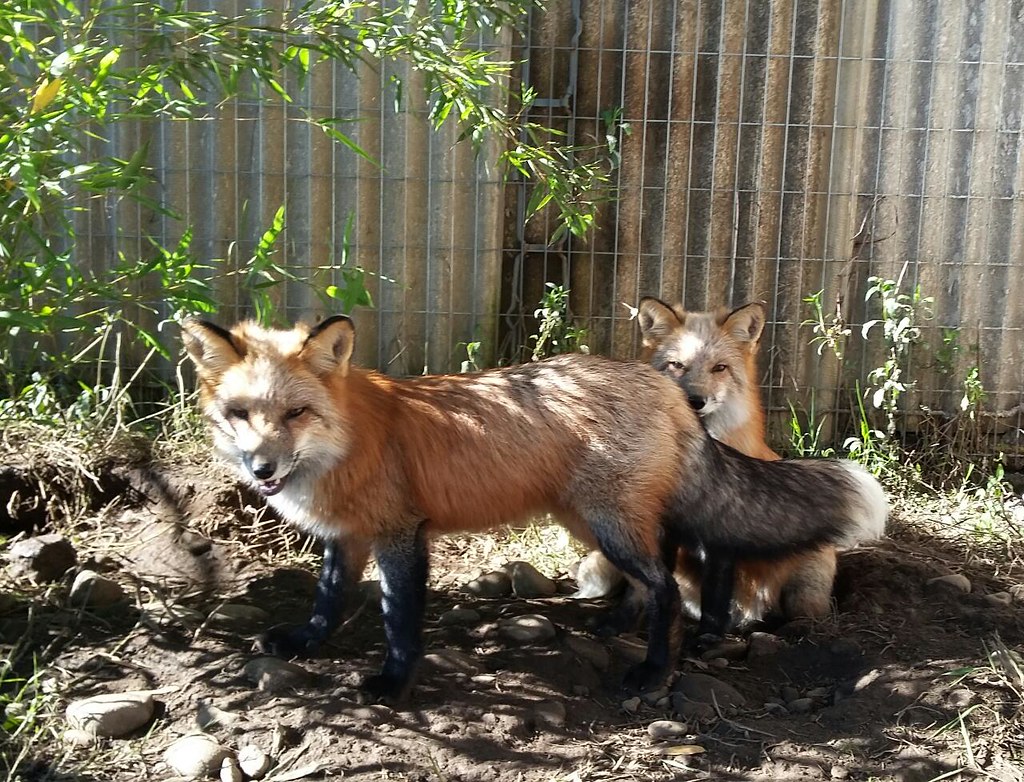The Fox is a very interesting animal, it reminds us a lot of wolves and dogs, but these have a generally reddish color, they have lived in the wild for a long time. However, at present, it has been observed that there are many people who have a fox as a pet, in this article you will learn everything about this topic.

The Fox as a Pet
Domestic foxes are cute, comical, and cunning little escape artists. They tend to form close bonds with their owners. As members of the canine family, they are very similar to domestic dogs. In general, his personality is more like that of a distant cat.
They are the only member of the canine family that can skillfully climb trees. Most domestic foxes are not domesticated. Most foxes kept as pets have been socialized or hand-raised from birth.
The pet fox has basic needs that you should consider before adopting: exercise and enrichment, habitat considerations, special dietary needs, and regular care by an exotic animal veterinarian.
Most foxes have high energy levels, mark their territory with urine, and have demanding enrichment needs. They are not suitable for the average pet owner, they need an extremely dedicated owner who can meet their specialized needs and tolerate their natural behaviors.
Foxes can be trained to use soil containers, but females are more successful than males. Foxes love to dig, which can damage carpets and indoor potted plants.
It should also be noted that each location has different exotic pet laws. A pet fox can be considered "a small, wild dog, a species not fit for the home, in short, an exotic animal," so make sure before you get one where you live.
Species raised as pets
The fox as a pet, like its counterpart the dog, has different species that can be considered as possible candidates to be domesticated. In the following paragraphs, we will mention the most common:
Fennec or desert fox
Arid country foxes (Vulpes zerda) are the most popular type of animal. These are raised by individuals. His small stature, long life and sweet nature make him a good choice for some to keep around the house.
May not be suitable for homes with small children or other pets as they tend to become brittle. As the smallest breed of fox in the world, it is sensitive and needs protection from harsher housemates. It also has a wide repertoire of vocalizations: moans, growls, screams, complaints, reasons and howls.
In general, it is an animal that measures about 12 to 16 inches, and can weigh 2 to 4 pounds. And his most striking physical features are his long, furry ears, and his beautiful silver-beige hair.
red or russian fox
The pet red fox (Vulpes vulpes) is not as popular as a pet fennec fox, but owners say they are as gentle as house cats. They are not domesticated and have certain drawbacks. Perhaps their worst offense is that they have the stinkiest urine of any fox breed.
Sterilization can help reduce the odor a bit. They are also prone to digging and need much more room to dig and play than other breeds. The silver fox is a domestic variety of red fox that was bred exclusively in Russia. This tame fox program reduced the fox's urine odor and improved its overall temperament.
In general, it is an animal that measures about 36 to 42 inches, and can weigh 8 to 15 pounds. And its most common physical features are a long snout, large pointed ears, quite reddish hair except on the belly since, in that place, it is white.
Silver Fox
Referred to by some as the Siberian, Arctic, and other names, it can at first be considered a true pet fox.
Through a selective breeding program in Russia, these foxes have some different characteristics and slight variations in genes from red foxes. A true domesticated silver fox is only available in Russia. Trying to acquire one can be difficult and cost a lot of money.
These foxes have a canine disposition and very little scent. Some aptitudes of dogs bred with silver foxes include wagging their tails when happy, barking and vocalizing, and lowering their ears. Caring for these foxes is no different than other breeds of foxes. If you are looking for a fox that is easier to care for, consider a desert or gray fox.
In size, this pet fox can reach 36 to 42 inches, weigh 8 to 15 pounds. At first glance, its outstanding physical characteristics are: long snout with large, pointed ears; black to bluish-gray to silver fur with a white-tipped tail; silver hairs may be scattered throughout.
arctic fox
The pet arctic fox (Vulpes lagopus) is very similar to the red fox, but is generally smaller and less common as a pet. An animal that has adapted to life in the Arctic is sensitive to high temperatures and can overheat more easily than other foxes. Measures may need to be taken to keep it cool. Due to a small breeding population in the United States, arctic foxes are older and some have genetic problems.
Like red foxes, its urine and scent glands make it a smelly choice for a pet. It is not well adapted to life indoors, as the scent marks its territory. He also loves to play in the sand and dirt and can turn his litter box more into a fun basket than a bathing spot. When it comes to foxes, you can have a good disposition.
In the physical section, it can be said that this pet fox can reach 28 inches, weigh 6 to 10 pounds. They stand out for their fur, change according to the season, that is, dark in summer and white in winter.
Grey Fox
Gray foxes (Urocyon cinereoargenteus) were the most abundant foxes in the United States. Over the centuries, human encroachment and deforestation have made the red fox the dominant species. Gray foxes are the calmest and friendliest pet fox species. In general, most foxes are wary of strangers, however gray foxes are friendly and affectionate towards most people.
Grays and most other foxes are never truly domesticated, although gray fox urine is not as sharp as that of other species. They can be troublemakers around the house, digging up rugs, marking areas, and randomly eating or chewing on things they shouldn't.
In the physical section, they stand out for their length from 31 to 45 inches, and a weight of 8 to 14 pounds. Pepper gray above, maroon on sides, chest, and back of head; legs and feet reddish; long bushy tail with a black stripe on top; pointed ears pointed nose; long, hooked claws.
eared fox
One small species, the long-eared fox (Otocyon megalotis), is a rare species to find and conserve. These foxes are native to the plains of Africa. In the wild, they are primarily an insectivorous species, with termites and dung beetles making up 80 percent of their natural diet.
As a pet fox, it can be fed meat and vegetables. Their owners kept them indoors. But, like other fox species, bat-eared foxes need an escape-proof enclosure. Watch out for digging and scent marking with this species of fox as well.
In general, it is an animal that measures about 18 to 26 inches, and can weigh 6 to 12 pounds. And his most striking physical features are his unusually large ears; yellowish gray fur; black face and legs; black tipped ears and tail.
swift fox
Native to the grasslands of North America, the swift fox (Vulpes velox) is a small species of fox that is a rare find in the exotic animal trade. This species is known to have a loving temperament and is less loud and energetic than fennec foxes.
Some reports state that this species is easier to train to use a litter box. Swift foxes are omnivores. Their diet includes herbs, fruits, small mammals, carrion, and insects. In the wild, this species lives up to 6 years. As pets, their life expectancy can increase to 14 years.
It is a species that grows up to 31 inches, can weigh from 4 to 7 pounds and its main physical characteristics are: the color of the dark, grayish or tan fur that extends to a yellowish color, along its sides and sides; legs, throat, chest and belly pale yellow to white; black tip of tail; black spots on its snout and large ears.
kit fox
The fox (Vulpes macrotis) is closely related to the swift fox. It is about the same size and is native to southwestern North America. A curious species by nature, it has little fear of humans and can form deep bonds with its owner. In the wild, it is an omnivore.
As a pet, he should be fed a combination diet of high-quality, high-protein dog food, cooked or raw meat, vegetables, and fruit for variety. Special treats may include hidden crickets or mealworms to stimulate their foraging instincts.
Very rarely does this species make a sound, but when it does, the sound may contain barks or low growls. This species of fox is one of the easiest to flush or potty train. When he makes noise, they can include low barks or growls. This species of fox is one of the easiest to train to use the toilet.
Since foxes like to climb, get this species a scratching post or a cat apartment. Give this fox a sandbox to dig holes in, which is one of his favorite things to do.
About the fox as a pet, it can be said that it is between 30 and 50 centimeters tall, weighs between 3 and 6 pounds and its relevant physical aspects are: large ears; gray-orange upper layer with white underparts; rear tail.
pale fox
The pale fox (Vulpes pallida) is native to the Sahara desert. This species is another rarity in the exotic pet trade. If you find one, it is usually necessary to import it.
Pale foxes are an odorless species, easier to train than fennec foxes, and have a friendly disposition. They tend to be noisy and make loud, dirty screeches like fennec foxes.
We can highlight its size of around 15 to 17 inches, its weight of 4 to 6 pounds and its pale sand-colored fur; whitish belly; long and relatively short legs; narrow snout; ears long and rounded on top; bushy black tail
corsac fox
Corsac foxes (Vulpes corsac) hail from northern Asia. They are rarely kept as pets in the United States, you are more likely to find them as pets in the United Kingdom. This species is generally compared to swift foxes in behavior, grooming, and appearance.
They are much easier to learn than most foxes, but they tend to sniff markings and their urine is pungent. If the fox is not bathed regularly, its fur will smell bad. If you keep this species at home, give it a porch. Expect the fox to lose its fur once a year in the spring.
If you want a fox as a pet of this species, you should know that they can reach 19 to 24 inches, weighing 6 pounds. And among its physical properties, it stands out: a soft and thick gray fur with silver tones and a whitish underside; black lace train
Advantages and Disadvantages of the Fox as a Pet
When the time comes to own and be responsible for a fox as a pet, it is worth considering that several advantages or positive points must be taken into account, from which the following can be highlighted:
- They are very loyal and friendly to their owner. In other words, they get to connect very well with the person who cares for them since they are little, creating a very strong bond.
- They are easy to feed, since most of them eat all kinds of raw meat, although there are species that can eat anything, that is, plants and animals, even insects.
Like any animal that can become a pet for humans, foxes have a series of disadvantages that we will mention below:
- It can be said that their training is closely linked to the species we choose to have. Since, there will be some that are very easy to train like the desert fox and others that are not, like the silver.
- For people who are very sensitive to smells, owning a fox can be a mistake, as some give off a strong scent when they urinate.
- Being very attached to their owners, the moment they are close to others they go into a protective and aggressive mode.
- In the legal aspect, as mentioned at the beginning. Depending on where we live, having one may be an illegal act and can bring significant penalties to our person.
Items to Consider
Next, we will give answers to certain questions that the future interested in acquiring an animal such as the fox asks.
Can foxes really be tamed?
Depending on the species that the person wishes to obtain, its domestication can be less or more complex. Therefore, in general, it is an animal that its entry into the world of pets is very difficult, but not impossible.
Are they still wild?
It should be mentioned that the first time foxes were treated as pets was in Russia in the 50s. At that time, certain crosses and tests were attempted to make them more docile with humans.
Over the years, this has evolved and some species that are raised in special enclosures can be considered as non-wild. However, there are behavioral traits in some species that continue to maintain their wild ancestors.
On the other hand, it should be noted that, if the animal does not come from these specialized centers, whether it was found in the wild as a child or was isolated without human contact in the enclosure, they can be classified as wild without exception.
Are foxes dangerous?
For students of the behavior of the fox, this is something specific to each animal, although as the years of life go by, it becomes more aggressive. Many imagine that an animal that has a beautiful and affectionate appearance as a puppy, does not necessarily behave in a docile way as it ages, it may not be aggressive with its owner, but with strangers it will be different.
What do pet foxes eat?
This species despite having a certain resemblance to dogs, in the part that corresponds to what is the food they are not the same, due to a characteristic of their food due to their condition of being omnivores, that is to say that they eat all kinds of meats and vegetables.
If we want to keep it in good condition, the most recommended thing is to give it a diet as similar as possible to the one it consumes in nature, that means that it should be supplied with meat from birds, rodents, small mammals, insects, fruits and vegetables, and complement it with commercial dog food.
It is very important to investigate which is the most suitable diet for each species. For example, fennec foxes need a higher intake of the organic compound taurine (abundant in chicken guts), otherwise they can suffer from seizures, blindness, and even death if they don't get enough.
Is it possible to train a fox not to pee?
It is generally a difficult task. While there are cases where the owner has made his fox pee in a litter box, the truth is that it doesn't work most of the time.
Red and gray foxes are said to have the best success rates, but nothing stops them from urinating to mark their territory. It is a trait that does not go away, even in docile foxes.
What happens if you don't take care?
If this is the case, behavior problems can become quite normal. The person who has a fox in the home environment must be able to care for it, allow it to freely express its behavior and perform other functions in accordance with legal requirements.
How is the training?
Exotic pets also benefit from interaction with their owners and training procedures. This is especially helpful at times when it's time to take them to the vet for a checkup.
A good advice in this regard is instruction with a fox harness as a pet. Condition your pet to accept the use of a harness as a puppy. Warning: Pet foxes are known to have the ability to escape, regardless of the type of harness you wear.
Also consider clicker training, a trusted method to use with all such species.
What is the best advice for your fitness?
It is possible to train these clever ones during the day, foxes are nocturnal animals, keeping them in closed enclosures is the most usual thing to train them and not let them roam freely around the house at nightfall. Although they can be sociable, their behavior remains unpredictable.
Interesting Facts about Foxes
Next, we will present some interesting information about the world of the fox as a pet, going from a small Japanese town where these animals live to their current situation in domestication.
Zao Kitsune Mura
In an unbeatable area in the north of the island of Honshu, in the mountains of Miyagi prefecture, where you can participate for a day with foxes that live in the wild.
We already know that Japan always leaves us speechless sometimes. But if we tell you that there is a city in the country where the inhabitants are these small mammals, you will think that we are ironizing.
But no, near the Shiroishi Mountains, there is a "village" inhabited by about 100 wild foxes of six different species, including the Japanese red fox, gray fox, brown-black fox, and others.
The town of the foxes is undoubtedly an ideal place for lovers of these curious little animals. Here the foxes roam freely in a reserve that can be entered. Foxes are very popular animals in Japanese tradition, and perhaps that is the perfect excuse for this place to exist.
In the Shinto religion, the fox is the messenger of Inari, the Japanese kami or god of prosperity and fertility of rice. This is why you will see a small Shinto shrine at Zao Kitsune Mura. Anyway, the truth is that they are charming.
Founded in 1990, this place attracts many tourists where you can also hold a baby fox in your arms for a while. You have to pay a ticket and you can also buy food to feed them at the same time. But you should know that there are certain rules that you must follow.
It is forbidden to feed them inside the cages and they can never be fed manually. This by way of information because the explanation will be given to you in Japanese.
As you enter this village you will see a small section converted into a petting zoo, here you will see foxes in cages or on a leash, usually babies that need to get used to their new home; and also some catchable rabbits, ponies and goats.
This part of the city is ideal for the little ones, as they can pet and touch the animals and take pictures with them. Then you just have to go through a door that gives access to an open area where foxes roam freely.
Among the trees and in a green and misty landscape, you will feel something strange, because it is not very normal to share their natural habitat with them. You will appreciate their presence and share an exceptional day with them. There are foxes of all kinds, foxes that will even approach you with curiosity.
By providing something to consume, they will chase you, but you can only do so in the area offered in the enclosure, and that's because foxes can be warlike when it comes to food. Others will simply run away as soon as they see you approach. And others will continue to sleep indifferent and calm.
Remember that deep down they are wild animals so do not try to touch them as they can bite you. Otherwise, you can walk around freely and enjoy their company. If you go there with your children, you will have to be careful.
As we have already said, it is near the town of Shiroishi, located in a very picturesque area, especially beautiful in autumn and very cold in winter, it is not uncommon to visit it when it is covered in white snow, it is open to the public every day from 9 am to 4 pm
Fox News
Today these little animals are seen a lot living with humans through most social networks. Thus causing an increase in the popularity of the fox as a pet.
However, it is worth mentioning that, in most cases, those people we see in the videos or images with the foxes have been their owners since they were little, and as mentioned above, they are probably the only humans that the animal cares about. knows, which makes it docile.
In addition, there is the possibility that the place where they live is allowed to breed this type of animal. If you want to obtain one, it is recommended to find out about the laws and regulations for the protection of fauna in the place where you live, to ensure its legality.
So the fox as a pet may initially be a good pet, but knowing its background you may want to look into more common alternatives like a dog or cat, even a fish.
If you liked our article What to do with a Fox as a Pet?, we invite you to read about other topics of great interest, such as:
